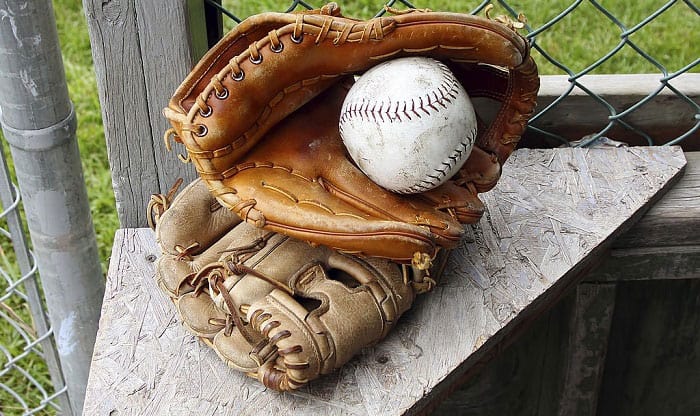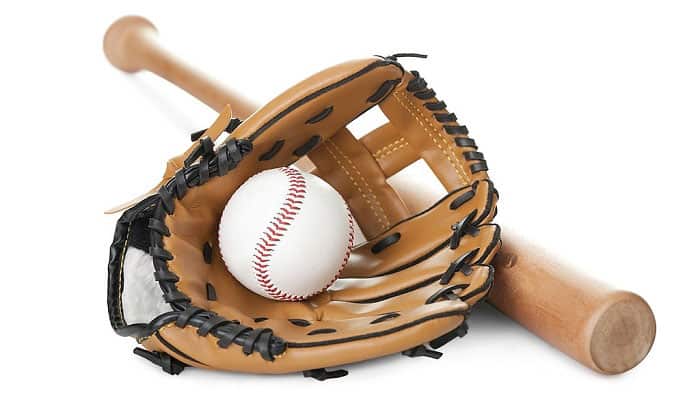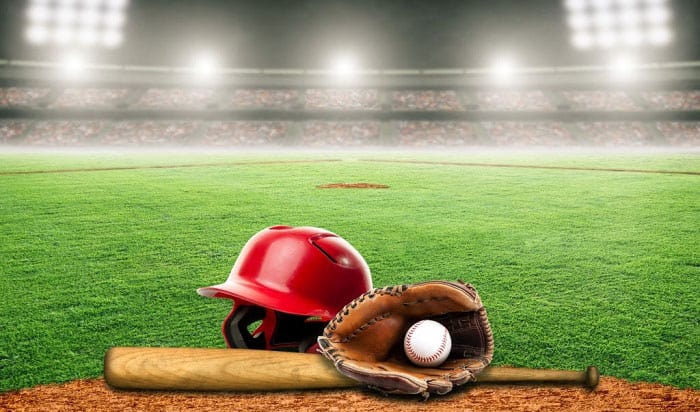Many baseball fans confuse baseball gloves with softball gloves. And that is perfectly understandable! You see: these two sets of gloves almost resemble each other in terms of lacing, leather, and color.
Read this article to learn what is the difference between softball and baseball gloves!
Contents
Softball vs Baseball Gloves: What Makes Them Different
Baseball and softball gloves differ in four main areas: size, player/game, pocket depth, and glove opening size.
1. Size
Size truly matters for baseball and softball gloves.
The required adult glove sizes range from 12.5 inches to 12.75 inches for baseball outfielders. For infielders, glove sizes range from 11 inches to 12 inches. For multiple-position players, the sizes range from 11.75 to 12.5 inches.
Finally, for pitchers, 11.5 to 12.5’’ is the range. The size even goes smaller, starting at 9 inches for youth younger than 13.
For softball’s regular fastpitch gloves, the sizes can range from 11.5 inches to 13 inches, with the former fitted for the infielder and the latter for the outfielder.
Another difference is the catcher’s mitt. The softball catcher’s mitt is bigger than the baseball catcher’s, ranging from 33 to 35 inches. The baseball catcher’s mitt is around 32-34.5 inches.
Between the two, the baseball catcher’s mitt feels bulkier than the softball one because of its added padding. This padding serves to protect the hand from an incoming high-speed baseball. Softball speed, on the other hand, is not as high.
2. Player or Game
A player’s glove preference heavily determines the difference between baseball and softball glove.
Baseball players prefer a slightly-loose feel on their gloves. This allows the player to catch a smaller ball without much difficulty. And since the glove does not need constant tightening, most baseball gloves do not include an adjusting strap on its back.
To respond to fastball needs, softball players like their gloves extra-tight and fitted to the hand. As a result, most softball gloves come with an adjusting strap (velcro) on their back.
Despite these differences, players of both sports share a common liking: they like their gloves broken in. A broken-in glove does not only feel comfortable to the hand, but it also enhances the player’s performance.
3. Design
The size of the ball influences the design of softball glove vs baseball glove.
A 12-inch average softball calls for deeper-pocketed and wider gloves. Without this design, it would be challenging for the pitcher to grip the ball in question. Also, the web/webbing in softball gloves appears more rooted into the pocket. This setup ensures that the ball is entirely hidden.
A 9-inch average baseball, on the other hand, has a more shallow pocket. The baseball gloves’ web design comes in diverse configurations to compensate for the lack of pocket depth.
4. Glove Opening Size
The difference in players’ sexes also influences the design of the gloves, precisely the size of their opening.
The opening tends to be smaller for softball gloves under the assumption that more women play the sport. Biologically, women have smaller hands than men.
For baseball gloves, the opening is a bit bigger to accommodate men’s commonly larger hand size.
What Are the Types of Baseball and Softball Gloves
The gloves or mitts of both sports also have their variations, depending on the position:
- Infielder’s Gloves or Mitts: These gloves effectively make contact with a ground ball. Their webbing has a more expansive and open feel to allow dirt to pass through. They are a few inches smaller than the first baseman’s gloves in terms of size. Still, they are quite long.
- Pitcher’s Gloves or Mitts: The primary function of these gloves is to keep the ball hidden. As a result, their webbing appears more dense, thick and closed. Their sizes are similar to infielder’s gloves.
- Catcher’s Gloves or Mitts: Catcher’s glove works like mitts due to their joined fingers. They technically do not have fingers but rather two solid sections separated only by a cleft against the thumb.
- Catcher’s gloves usually have a deeper pocket and thick padding for support, protection, and grip.
- First Baseman’s Gloves or Mitts: First baseman’s gloves are bulky but not as bulky as catcher’s gloves. However, in terms of length and width, these tend to be longer and wider than infielder and outfielder gloves.
- Outfielder’s Gloves or Mitts: Used for fielding fly balls and ground balls, these gloves are long (but not as long as the first baseman gloves) with deep pockets for smoother fielding efforts. Note that the pockets don’t have much padding.
Is It Safe to Use Softball and Baseball Gloves Interchangeably
No. It is not safe to use the two gloves interchangeably because despite the apparent similarities they share, both are not built to withstand the pressure inherent in each sport.
Softball and baseball gloves fulfill the intended physics of their design, and using them interchangeably would ultimately damage them.
Apart from the damage to the gloves, using the wrong ones seriously affects the player’s performance. Worst, it can even cause injury to the player.
Which Are More Comfortable to Use: Softball or Baseball Gloves
Are softball gloves different than baseball? Yes. They are. But there is no one answer to the question “Which one is more comfortable?” It should be the player who gets to decide.
However, if the gloves aren’t designed for comfort, the player is sure to experience problems with the gloves of either sport.
The main features of comfortable softball and baseball gloves include:
- Solid Construction: A solid construction pertains to the gloves’ components. Although varied, these components or parts are expected to be present in baseball and softball gloves.
These include:
- Heel
- Back
- Web
- Fingers
- Sturdy Material: It does not matter whether the gloves are made of mesh, genuine leather, or synthetic leather. What is important is that these materials are well constructed and incorporated into the gloves.
- Broken-in Gloves: Any glove, whether it is a baseball vs softball glove, needs to be broken in to achieve the best fit and shape. Most broken-in gloves guarantee reasonable control by the hand.
Conclusion
Knowing what is the difference between softball and baseball gloves keeps one ahead of the game, especially if that person’s a professional athlete.
Softball and baseball gloves may seem identical to each other, but they still have their differences. And these differences in functionality make them fit for their intended sport.

A powerful swing and the ball is flying across the field, just one hit, and we might never forget the thrill it brings. I do not know about you, but I never do. Every baseball game is the chance to compete with others and cooperate with your teammate. It is among my biggest passions.
















